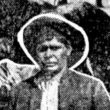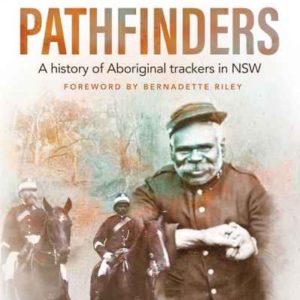Loading map...

A single mounted policeman was first stationed at Dandaloo on the Bogan River in May 1871, rising to two early in the New Year. Trackers were employed from 1875 and through to 1909. Paddy was a well-traveled tracker who worked at Dubbo and Dandaloo in these early years. Prior to his employment he had been arrested and tried in October 1876 for the murder in the Bourke district of an Aboriginal man named Jemmy Carr. A tracker named Tommy Bobart and other Aboriginal people gave evidence against him. Paddy was found guilty and sentenced to death, but the conviction was overturned on appeal when the judge found that Aboriginal evidence was unreliable because the witnesses could not swear an oath before God. He also found that Paddy’s punishment was a matter for Aboriginal people to decide and not the European justice system. Retribution was swift and Paddy was killed by two Aboriginal men at Caroline Station near Dandaloo in July 1878 [ref]Diana Chase 2009: Window on Dandaloo: A Community on the Bogan River, Tottenham Historical Society; Maitland Mercury and Hunter River General Advertiser 13 June 1876: 6; Sydney Morning Herald 2 December 1876: 7; Sydney Morning Herald 11 December 1876: 5; Evening News 27 July 1878: 3.[/ref].
A well-known tracker at Dandaloo in the 20th century was Alexander Solomon, son of Kitty Hanley, an important matriarch for Bogan River Wiradjuri families. He was employed at Dandaloo in 1905 and 1906, possibly living at the nearby Dandaloo Aboriginal Reserve which had been gazetted in 1900. Solomon was transferred to Collie Police Station where he worked for from 1907 to 1908. Born at Dubbo in the early 1870s, he moved in later life to Darlington Point near the old Warangesda Mission where he passed away in December 1934. There is no record of children [ref]Death Certificate of Alexander Solomon 1935/003531.[/ref].
The village of Dandaloo began to decline after the railway went to Tottenham in 1916. There is no evidence of trackers after 1909, although Jimmy Nerang, former tracker at Narromine and Dubbo, traveled to Dandaloo, probably to visit the Aboriginal reserve. He passed away on the road from Narromine to Dandaloo in 1929. The police station closed in 1933 and the station house, which had been constructed in 1894, was dismantled and reassembled at Trangie [ref]Diana Chase 2009: Window on Dandaloo: A Community on the Bogan River, Tottenham Historical Society.[/ref].

 This website explores the history of Aboriginal trackers in NSW from 1862 when the current NSW Police Force was established through to 1973 when the last tracker, Norman Walford, retired. You can read about the lives of individual trackers and some of the incredible tracking feats they...
This website explores the history of Aboriginal trackers in NSW from 1862 when the current NSW Police Force was established through to 1973 when the last tracker, Norman Walford, retired. You can read about the lives of individual trackers and some of the incredible tracking feats they...

There were over 200 NSW police stations that employed Aboriginal trackers between 1862 and 1973. Many were concentrated in the central-west and north-west of the state, the agricultural and pastoral heartland of NSW. This is because one of the main jobs of trackers was to pursue sheep, cattle and horse thieves. Trackers sometimes lived in small huts out the back...
Learn More ►
Pathfinders book Pathfinders, A history of Aboriginal trackers in NSW, written by Dr Michael Bennett and published by NewSouth, is now available from all good bookstores. Click on the link below to order your copy. https://www.abbeys.com.au/book/pathfinders-a-history-of-aboriginal-trackers-in-nsw.do Early History Since the beginning of the colony, government agencies, explorers, surveyors and members of the general public called upon the tracking...
Learn More ►